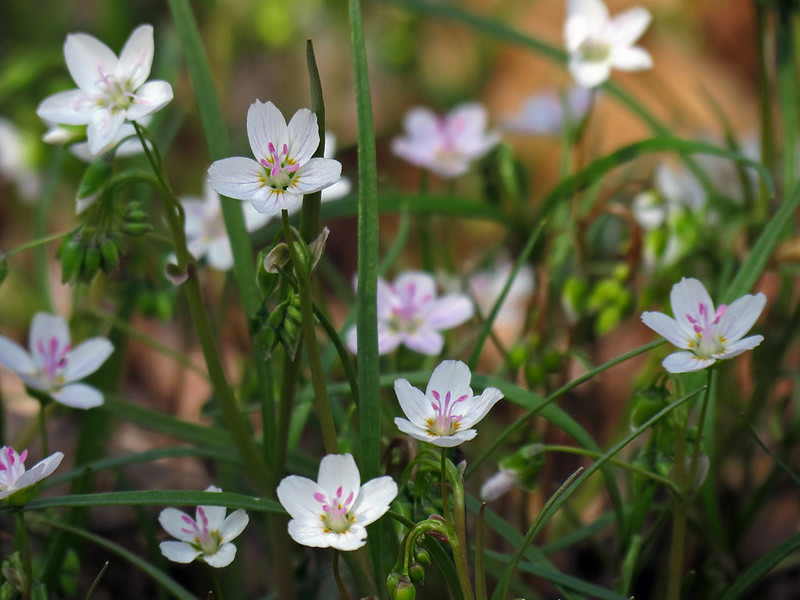Brighten your garden with spring ephemerals and hardy perennials for blooms from March to May possibly. After winter, pollinators are trying to get nectar and pollen. You can include natural beauty to your garden with flowering spring plants that support pollinators thrive.
Below are 8 well-known bouquets that offer spring blooms, entice pollinators, and are indigenous to Kansas, Missouri, and outside of.
1. Spring Magnificence (Claytonia virginica)
With early spring blooms in February-May,the fragile pink and white blooms of spring beauty can produce a stunning groundcover. The plant goes dormant shortly soon after blooms, but does not depart a hole in the garden.It appeals to indigenous bees, and grows in portion shade and moist soils.
2. Virginia Bluebells (Mertensia virginica)

As a well known spring ephemeral, Virginia bluebells bloom in February-April and go dormant in summer months. It grows best inclumps remaining undisturbed in moist, shady woodlands or indigenous gardens. It grows 1-2 feet tall with showy blue trumpet flowers.
3. Downy Phlox (Phlox pilosa)

With blooms in February-April, downy phlox draws in bees, butterflies, and skippers to its clusters of aromatic lavendar bouquets. It will expand 1-2 feet tall. It does very well in total sunshine/section shadein dry, perfectly-drained soil.
4. Roundleaf Groundsel (Packera obovata)

Roundleaf groundsel presents a awesome semi-evergreen groundcover in the winter, and in April-May well 1-foot stems increase with clusters of yellow flowers. Quite a few bees, flies, and beetles use the nectar and pollen, and it is host to the northern metalmark butterfly. It does perfectly in dry, shady spots.
5. Jacob’s Ladder (Polemonium reptans)

Jacob’s ladder is a well known woodland plant with great foliage and sensitive purple flowers. It blooms in April-May well, and is a dependable supply of nectar and pollen for early pollinators. The stems with clusters of flowers rise 10-20 inches. The foliage stays eco-friendly all summer months. It does well in partial shade.
6. Canadian Anemone (Anemone canadensis)

This leafy perennial capabilities showy white and yellow flowers in May perhaps. Canadian anemone likes solar and wetsoil, and can supply a pleasant groundcover rising20 inches large and spreading 2-5 toes. It draws in early pollinators.
7. Golden Alexander (Zizia aurea)

With blooms in late spring, golden alexander attracts pollinators and is a host plant for the Black Swallowtail and Ozark Swallowtail. Its features little yellow flowers on stems expanding 3 feet tall. It grows in common humidity, nicely-drained soil in full sun to element shade.
8. Fringed Bluestar (Amsonia ciliata)

Fringed bluestar functions silvery blue blooms in April-May well, and gives eco-friendly foliage in the summer up to 3 toes tall. In the tumble, it turns into a nice shade of yellow. It likes to be planted in groupings in medium humidity, effectively-drained soil in complete sunshine to light shade.
Examine additional options for native vegetation with plant databases from Increase Native, Missouri Botanical Backyard, and the Lady Hen Johnson Wildflower Center.
Receiving started off with native vegetation? Study far more at grownative.org and deeproots.org.
